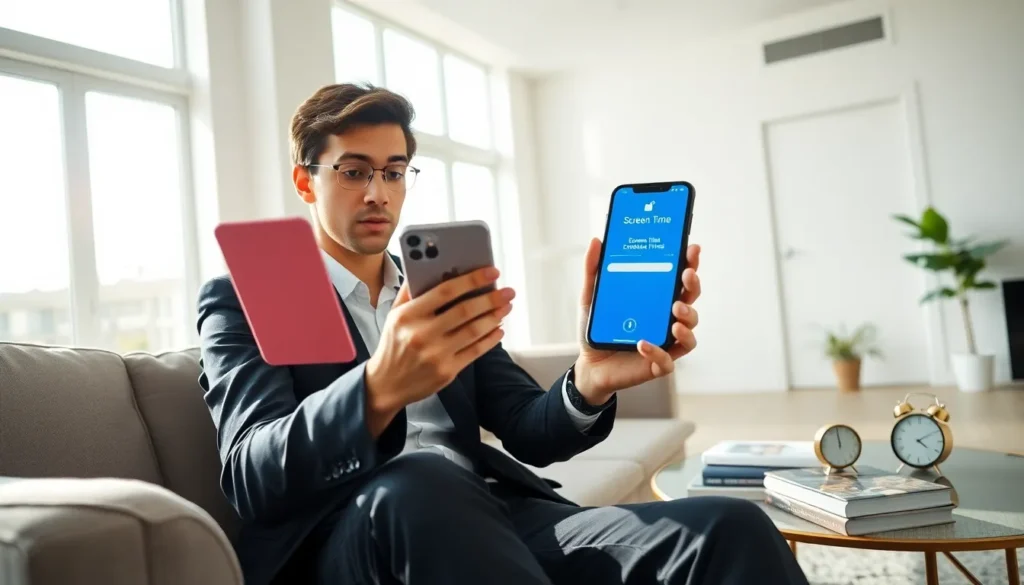Table of Contents
ToggleIn a world where scrolling through social media or binge-watching shows can easily consume hours, the iPhone screen time limit feature comes to the rescue like a digital superhero. Picture this: you’re lying on the couch, mindlessly swiping away. Suddenly, your screen notifies you that you’ve exceeded your limit. Cue the gasp. It’s not just about putting down the phone: it’s about reclaiming those lost hours. Here’s your all-in-one guide to understanding and managing screen time limits on your iPhone, so you can spend less time online and more time in the real world, unless you’re reading this online, of course.
Understanding Screen Time on iPhone

What Is Screen Time?
Screen Time is a feature on the iPhone that helps users track the time spent on various apps as well as overall device usage. It offers insights into how individuals are engaging with their digital devices, allowing them to make informed decisions about their habits. Basically, it’s like a report card for your phone time, without the red pen.
Why Monitor Screen Time?
Monitoring screen time isn’t just about knowing how many hours are spent on TikTok or Instagram. It provides valuable data that can lead to healthier habits. Research suggests excessive screen time can affect sleep, productivity, and even emotional well-being. By keeping an eye on usage, one can strike a better balance, ensuring that tech enhances rather than dominates daily life.
How to Set Up Screen Time Limits
Step-by-Step Guide to Setting Limits
Setting up screen time limits on an iPhone is straightforward. First, open Settings, then tap on Screen Time. From here, activate Screen Time and select App Limits. It’s where all the magic happens. Users can specify which apps they want to limit and set daily allowances. Simple, right? After all, it’s not like climbing Everest.
Choosing App Limits and Downtime Settings
When establishing app limits, consider what’s truly necessary. Users can manage categories or individual apps, setting time constraints that fit their lifestyle. But that’s not all, Downtime settings can be configured to limit app usage during specific times, like bedtime. Just think of it as a curfew for your smartphone.
Managing Family Screen Time
Setting Up Family Sharing
For parents wanting to maintain control over their children’s device usage, setting up Family Sharing is a game changer. It allows families to share purchases, subscriptions, and, importantly, screen time settings. Enabling Family Sharing means that parents can approve purchases and establish guidelines that even tech-savvy kids would think twice about challenging.
Monitoring Kids’ Screen Time Activity
Once set up, monitoring kids’ screen time activity becomes a breeze. Parents can view activity reports, see app usage, and even adjust limits remotely. This ensures that children are not just zoning out on devices while the world passes by.
Troubleshooting Common Issues
What to Do If Screen Time Isn’t Working
Sometimes, technology doesn’t cooperate. If screen time limits don’t seem to apply or are unresponsive, first double-check that Screen Time is enabled. Restarting the device can clear up glitches, think of it as a small reset for both the phone and your sanity.
Adjusting Settings and Permissions
If problems persist, consider reviewing the permissions granted. Ensuring that all necessary settings are enabled is crucial to making Screen Time work effectively. Sometimes it’s the tiny locks on permissions that cause the biggest headaches.








